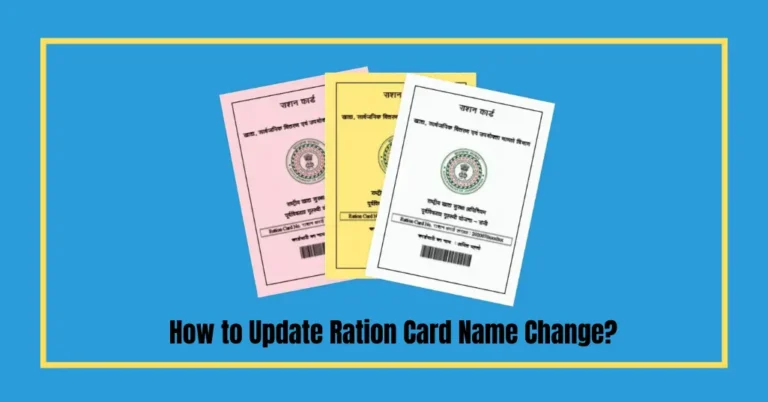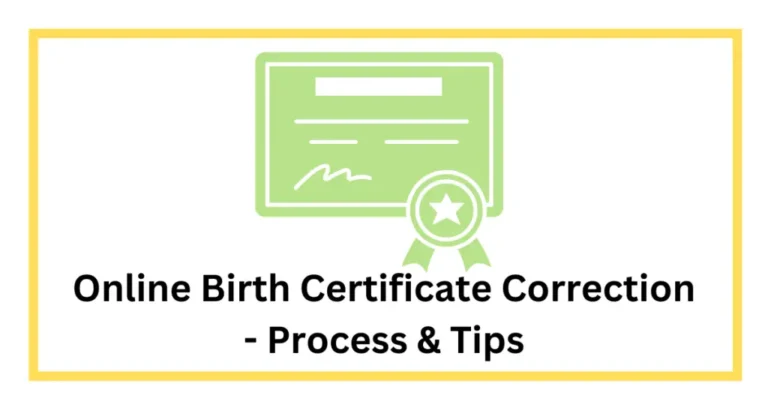To make things easier in difficult times such as when your spouse passes away, this article will explore the process for changing the name and list the steps you’ll need to take.
Marriage often involves the tradition of taking on a spouse’s surname. While this practice signifies unity and commitment, it can present challenges if your spouse passes away. Coping with the loss is already emotionally taxing, and the legal process of changing your name posthumously adds another layer of complexity. Regardless of your location, the procedure for name change after the death of a spouse typically involves court proceedings and adherence to specific steps mandated by local laws. Essential documents such as the marriage certificate and the spouse’s death certificate are integral to this process. This article aims to demystifies the process of changing your name after your spouse dies providing a comprehensive overview and outlining the necessary steps. Understanding this procedure is crucial for those grappling with the aftermath of a partner’s death.
Before delving into the steps, let’s explore the common hesitations people may have when initiating this transformative process.
Why Are People Hesitant for Name Change After Their Spouse Dies?
The reluctance to change one’s name after a spouse’s death often stems from a profound sense of betrayal toward the memory of the deceased partner. This emotional weight can make the decision challenging, as individuals may grapple with feelings of loyalty and attachment to the shared surname.
It’s essential to recognize that the decision to revert to a maiden surname or adopt a new name is a personal choice, firmly within an individual’s control. While the emotional aspect can be powerful, the practicality of managing one’s life and identity takes precedence.
Embarking on the process of name change after a spouse’s death may seem daunting, marked by its lengthiness and occasional challenges. However, the reality is that the procedure is generally manageable.
Initiating the name change process often involves consulting a legal expert, understanding the necessary paperwork, and filling up the required forms. By acknowledging the emotional weight while recognizing the practical aspect, individuals can navigate this transformative decision with a sense of agency and purpose.
Is There Any Reason to Keep My Passed Spouse’s Surname?
The decision to retain a passed spouse’s surname is often influenced by sentiments tied to the memories of a happy relationship. There is no right or wrong in wanting to keep that connection alive through the shared surname.
However, practical considerations should also come into play before deciding to undergo a name change. Several crucial points merit careful consideration:
- Document and ID Updates: Retaining your deceased spouse’s surname means avoiding the need to update various documents and identification cards acquired during the marriage. This includes items such as driver’s licenses, passports, and other official IDs.
- Minimizing Confusion for Children: If you choose to change your surname after the passing of your spouse, it’s essential to have open and honest communication with your children. Clarifying that the decision is not a reflection on them is crucial, as children may be sensitive and misinterpret the change as a form of punishment.
Click here for Name Change Application
The Process for Changing Your Surname: It’s Actually Pretty Easy
Changing your surname after the death of a spouse involves a legal process that varies based on local laws and regulations. Below is a step-by-step guide to help you navigate this process in India:
1. Obtain the Death Certificate: Before initiating the name change process, obtain an official death certificate of your spouse. This document is a crucial prerequisite for the legal procedures that follow.
2. Legal Consultation: Seek legal advice to understand the specific requirements and procedures applicable in your region. Consult with a lawyer to get insights into the documentation needed and the legal steps involved.
3. Prepare Required Documents:
- Gather essential documents, including:
- Death certificate of the spouse.
- Your marriage certificate.
- Your identification documents (Aadhar card, passport, etc.).
- Affidavit stating the reason for the name change.
4. Affidavit Submission: Prepare an affidavit that explains the reason for changing your surname after your spouse’s death. Submit this affidavit to the local magistrate or notary public, and ensure it is duly signed and notarized.
5. Newspaper Publication: Publish an advertisement in at least one local newspaper declaring the intention to change your surname. This serves as a public notice and is often a mandatory step in the process.
6. Gazette Notification: Apply for a name change in the official Gazette of India. This step is essential for legal recognition and authentication of the name change.
7. Update Official Documents: Once the Gazette notification is received, proceed to update your surname on various official documents such as Aadhar card, PAN card, passport, and any other relevant IDs.
8. Inform Relevant Authorities: Notify relevant authorities and institutions about your name change. This may include banks, employers, educational institutions, and any other entities with which you have official associations.
9. Obtain Affidavit Copies: Obtain multiple copies of the notarized affidavit and Gazette notification, as these may be required for updating your name on different documents.
10. Follow-Up: Regularly follow up with the concerned authorities and institutions to ensure that your surname is updated accurately in their records.
Note: The specific steps and requirements can vary based on the jurisdiction and local regulations. It’s advisable to consult with legal professionals for personalized guidance tailored to your situation.
State Law Complications and What You Should Remember About Them for Name Change
Changing your name after your spouse dies, though a relatively straightforward process, can be influenced by state laws, introducing some complexities. Here are key considerations when changing your surname after your spouse passes away, taking into account potential state-specific nuances:
1. Publication Requirements:
- State Variations: Some states may mandate publishing your name change in newspapers. Typically, this involves publishing in both a local-language newspaper and an English newspaper.
- Compliance: Be aware of your state’s specific requirements regarding the publication of name changes, and ensure compliance to avoid legal complications.
2. Proof of Spouse’s Death:
- Documentation: Courts in certain states might request proof of your spouse’s death as part of the name change process.
- Readiness: Keep a copy of the death certificate readily available, as it may be needed to substantiate the basis for your name change.
3. Witness Requirement:
- Identity Corroboration: Some states may require a witness to corroborate your identity during the name change proceedings.
- Selection of Witnesses: Family members or close friends who have known you for an extended period are generally accepted as witnesses.
Conclusion – Changing Your Name after your Spouse Dies
In the end, the decision to retain your spouse’s surname or revert to your maiden surname is a personal one. Take the time to reflect, and if you feel the desire to reclaim the security of your maiden name, don’t hesitate to begin the process.
While often uncomplicated, seeking professional assistance and consulting with a lawyer can provide valuable guidance on navigating the surname change journey.
Read more,
- Get Name Change Affidavit in India
- How to download Gazette Form for Name Change
- Name Change Procedure in India
- Changing Name in Documents After Changing the gender










